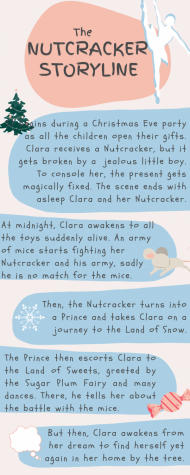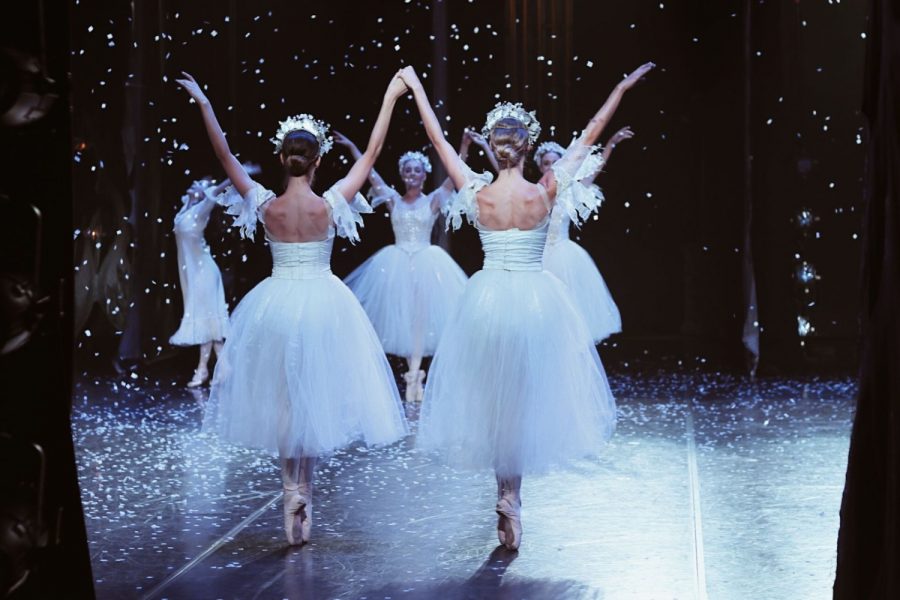The warmth of the theater shields the cool air of the winter months. The audience takes their seats as the lights dim and classical music fills the space. In the midst of the holiday season, Nutcracker performances open to the public.
The Nutcracker tells the story of young Clara as she travels in a dream with her toy nutcracker. The two-act ballet is the simplified interpretation of Hoffmann’s tales.

Although performances begin in December, the ballet performers have been preparing for months. Since their auditions in the fall, ballerinas have been practicing for hours, perfecting their dances for the Nutcracker season.
“It is amazing to see all our hard work finally come together and to see how each dance plays its part in the larger performance,” Sonia Dwivedi said.
Dwivedi has been dancing ballet for 12 consecutive years, studying Cuban, Russian, classical, and contemporary ballet styles. She is currently a sophomore at Palo Alto High School and is performing her sixth time in the Nutcracker this year.
“There can be a lot of work in a short period of time as we ramp up for the performance, especially for high school dancers. Nutcrackers usually coincide with final exams, so we have to learn to manage our time to succeed in both school and ballet,” Dwivedi said.
Nutcracker performances tend to open and end in December, although some studios may open earlier or continue their performances until January.
Leading up to each studio’s performance, dancers must attend longer practices put in place by their studios. But the more frequent rehearsals can cause them physical strain.
“I think it can be very challenging for pointe dancers to be constantly on their toes during the increasingly long practices anticipating performances. Depending on their part, it can be invasive and painful for them, but they have no choice but to work through it,” said Roxanne Seliger, a Carlmont dance teacher.
Pointe shoes have a wooden box in the toe to lengthen the dancers’ legs and emphasize their movements. Despite the protections ballerinas place on their feet, the non-malleable toe box can be painful and intrusive.
Learning the dance is a challenge in itself, even for dancers like Isabelle Kraemer, who has been ballet dancing for 11 years. She is currently attending Ayako School of Ballet and has performed in the Nutcracker four times.
“You have to learn the dances pretty fast, and since you have to learn them through a video, it can be hard. Sometimes the videos are mirrored, but sometimes they’re not, which can be confusing. Also, once you get older, the teachers expect you to know all the dances already, so you barely have any time to learn them,” Kraemer said.
The long practices and the challenging learning curve are physically taxing on the dancers, but they also impact their lives outside of dance.
“The problem is that there are additional four-hour rehearsals every Sunday evening until 9 p.m., and with homework and school, I don’t have any time for procrastinating anymore,” Kraemer said.
The stress and pressure associated with the looming date of the performances also impact the teachers. Ballet teachers and producers must organize all the dances to tell the story and ensure all the ballerinas, especially the young ones, know their routines.
“The teachers get stressed, which sometimes gets them into bad moods. We’re just not always at the point they want us to be at, but every year it still works out,” Kraemer said.
Although some aspects of the performance preparation can discourage dancers, the opening night seems to make up for it.
“When we get to perform, the dancers have a lot of enthusiasm, and we have a lot of adrenaline pumping in our blood, which makes the whole performance so memorable,” Kraemer said.






















